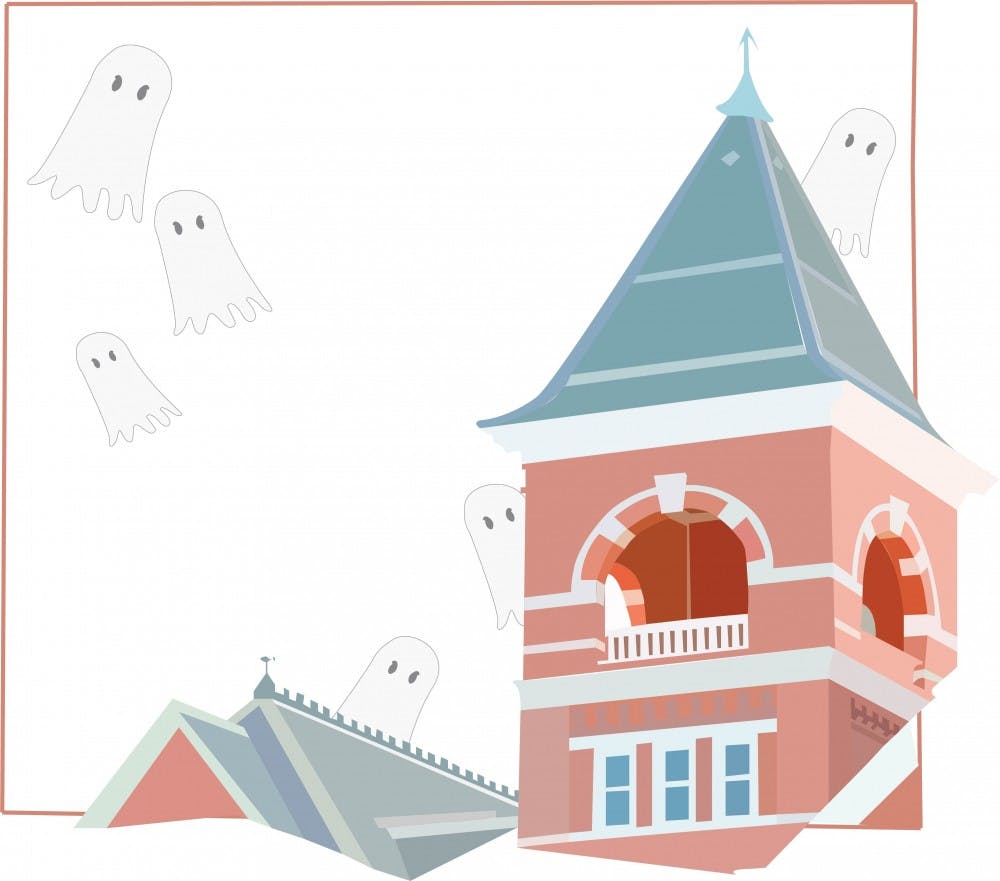Auburn as a city and a college has such a long history, so it wouldn’t be too surprising if some of the people from that history stuck around.
Faith Serafin, a paranormal investigator and coauthor of Haunted Auburn and Opelika, along with John-Mark Poe, a part of the Alabama Spectral Investigators, both note that in Auburn there are three main places that are known for being haunted: Telfair B. Peet Theatre, University Chapel and Pine Hill Cemetery.
Telfair B. Peet Theatre and University Chapel both share a common spirit called Sydney Grimlett. He is said to be a Civil War soldier with a missing leg. Serafin notes his description does tie in with some of the histories of the area.
During the Civil War, many wounded soldiers would come to Auburn because University Chapel serviced as a hospital, Serafin said. She explained it was very common to amputate body parts and said some letters indicate many body parts would be disposed of in front of where Samford Hall stands today. Also, she said many of those who died at the hospital were buried in a mass grave at Pine Hill Cemetery.
With this in mind, it’s conceivable that there would be a spirit of a legless soldier. As far as if Grimlett was a real person, it’s hard to say. However, Poe said he found a record of a Sydney Grimlett that lost a leg in the war and who was sent to Auburn. So, it is possible this could be the same Sydney Grimlett. However, views differ.
When it comes to the signs of haunted activity, Serafin discussed tales of props going missing or items falling during shows that were performed at the University Chapel before the theater was built. Yet, it’s said to appease Grimlett to put chocolates up in the rafters.
Serafin explained how Grimlett also became associated with Telfair B. Peet Theatre. Legend has it, they asked Grimlett to come with them to the newly built theater.
However, they forgot they made this request and didn’t put the chocolates up in the rafters. So, things started going awry again. Serafin said, ironically, the one legged soldier was said to have been causing shoes to disappear. At some point, though, they remembered Grimlett wanted his chocolate and the disturbances subdued. Serafin noted, as far as she’s aware, they still put chocolates up before every performance.
Meanwhile at Pine Hill Cemetery, Poe briefly discussed some the signs of hauntings there. He said people have reported seeing a black shadow roaming around.
“It would actually be darker than darkness around it,” Poe said.
He also discussed a ghost cat that is said to be there. Poe remarked the cat will jump onto the tombstones, but as soon as it jumps off it disappears.
As to why this region may be susceptible to hauntings, both Poe and Serafin point out the Civil War and the presents of quartz which is associated with spiritual or paranormal qualities.
However, Serafin adds the spiritualism of the Native Americans from this region to be a factor.
“Here in America we only got a couple hundred years of written history,” Serafin said. “A lot of our history is gone and pretty much forgotten otherwise through oral traditions, storytelling and things like that, things like folklore because Native Americans were removed from this area.”
Keith Hebert, an assistant professor in history, built on this idea with the history of Auburn. He said the Creek Indians were the natives of this region, and they were the tribe that formed from the survivors of the older tribe members that lived through the epidemics of the European diseases.
Hebert noted the actual city did not get established until around the 1830s when wealthy plantation owners began to settle here. He explained it was common for planters to build a bunch of little towns due to of the vast amount of land available.
“They tried to create almost this utopian sort of town, based on their planter, aristocrat sort of values,” he said.
Hebert discussed the history further by explaining Opelika was established around the same time as Auburn, but through the twists and turns of history, Opelika grew to be more focused around industry and around the ‘60s Auburn grew to be more focused around the college.
Serafin explained these ghost stories and the history of Auburn go hand in hand.
“I like to say we’re saving history one ghost story at a time,” she said.
Serafin also believes ghost stories can help keep that curious mindset engaged because it can make you question and investigate. Poe supports this idea with his personal outlook of wanting to understand the paranormal.
“Why is this happening?” Poe asked about paranormal activity. “Is it due to, you know, natural phenomenons that’s causing this to happen, you know? Is it an actual human spirit coming back from the dead, you know? Is it something completely different?”
In the end, they both agree research is key.
“Just because it’s old, doesn’t mean it’s haunted,” Poe said. “It’s like: Is there a history? Is there a reason? And then if there is investigate further.”
Do you like this story? The Plainsman doesn't accept money from tuition or student fees, and we don't charge a subscription fee. But you can donate to support The Plainsman.

Abigail Murphy, senior in journalism with minors in history and women and gender studies, is the operations managing editor at The Auburn Plainsman.





